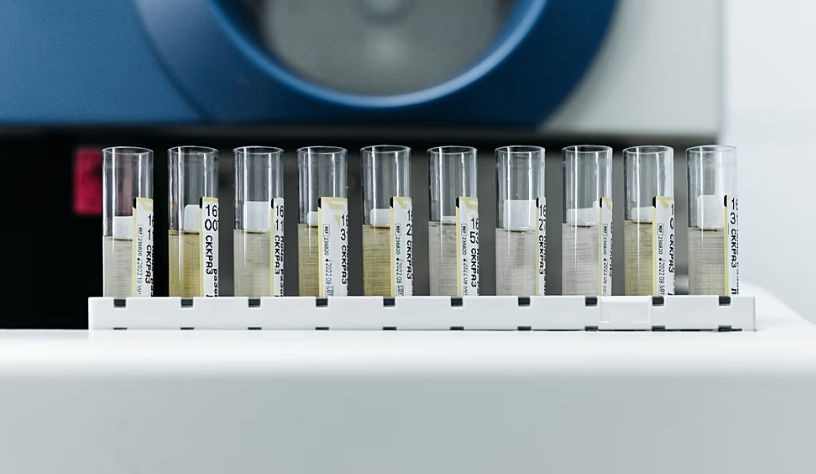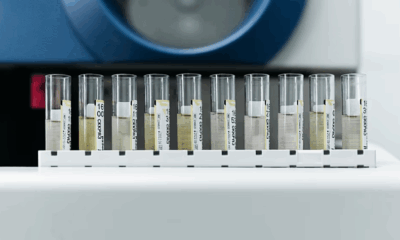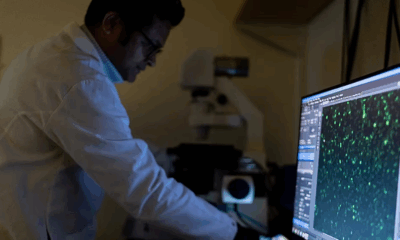Health
No Proven Link Between Paracetamol Use in Pregnancy and Autism or ADHD, Major Review Finds

A new comprehensive review has found no reliable evidence that taking paracetamol during pregnancy increases the risk of autism or attention-deficit/hyperactivity disorder (ADHD) in children. The findings, published in The BMJ on Monday, counter recent claims that have reignited global debate over the safety of the widely used painkiller.
The review, conducted by researchers from leading universities and institutions in the United Kingdom, Australia, and Spain, analysed existing scientific studies after renewed public concern following remarks by former US President Donald Trump in September. During a campaign event, Trump urged pregnant women to “fight like hell” to avoid paracetamol, claiming it was linked to autism — a statement that drew swift backlash from medical experts.
The researchers reviewed nine previous systematic studies that examined a possible connection between paracetamol use in pregnancy and later diagnoses of autism or ADHD in children. While all nine suggested an association, the team found that most of them were based on weak or flawed evidence.
According to the review, many of the earlier studies failed to adjust for key health and lifestyle factors such as genetics, parental mental health, or environmental influences — variables that could affect a child’s development. Seven of the nine reviews also warned readers to interpret their findings cautiously due to the risk of bias and confounding factors.
“Our aim was to review all the existing research to understand the quality of the evidence and help healthcare professionals communicate accurate information to expectant mothers,” said Professor Shakila Thangaratinam, a women’s health expert at the University of Liverpool and one of the study’s authors. She told Euronews Health that the overall confidence in existing evidence was rated “low to critically low,” meaning it cannot be used to establish a causal link between paracetamol and neurodevelopmental disorders.
The review noted that when genetic and environmental influences were taken into account, any association between paracetamol use and the risk of autism or ADHD either disappeared or dropped sharply.
Paracetamol, known as acetaminophen in the United States and sold under brand names such as Tylenol, is one of the few pain and fever medications considered safe for use during pregnancy. Despite this, Trump’s comments led the US Food and Drug Administration (FDA) to recommend that manufacturers include warnings about potential neurological risks on paracetamol packaging.
The authors of the BMJ review urged more high-quality studies that examine how dosage, timing, and duration of paracetamol exposure during pregnancy might influence foetal development. They also warned against drawing conclusions or changing medical guidance based on unverified claims.
Professor Thangaratinam emphasised that decisions about medication during pregnancy should be grounded in strong evidence. “There is a sex and gender gap in science, and studies like this highlight the need for prioritising and investing in research focused on women’s health — particularly during pregnancy,” she said.
The review reinforces existing advice from global health agencies that paracetamol remains a safe and effective option for managing pain and fever in pregnancy when used as directed.
Health
WHO Warns of Sharp Rise in Mental Health Conditions Among Europe’s Youth

A growing number of children and teenagers across Europe are experiencing mental health conditions, with global health officials warning that support systems are failing to keep pace with the surge. A new analysis released by the World Health Organization (WHO) outlines the scale of the challenge and calls for urgent action across the region.
According to the report, one in seven Europeans under the age of 20 are living with a mental health condition — a rise of about one-third over the past 15 years. The findings show clear gender disparities, with girls facing greater vulnerability. Among girls aged 15 to 19, one in four report having a mental health condition, making them the most affected group.
The report also highlights striking differences between countries. Teenagers in the Faroe Islands, Iceland and Denmark ranked among the highest for mental wellbeing, while those in Ukraine, Cyprus and Poland were placed at the lower end of the scale. The data reflects both long-term trends and the impact of recent crises.
Concerns about youth mental health have intensified in recent years, driven by a combination of social isolation, the effects of the COVID-19 pandemic, geopolitical tensions and growing economic pressures. Experts say these factors have created an environment in which young people are increasingly exposed to stress and uncertainty.
Access to professional support remains one of the region’s biggest obstacles. The WHO report notes that about one-quarter of European countries do not have community-based mental health services for young people. In addition, one in five countries lack dedicated mental health policies, leaving many children and teenagers without structured pathways to receive help.
“This report is a wake-up call,” said Dr. João Breda, who works on patient safety and healthcare quality at the WHO. “Every child and young person has the right to mental health support and high-quality care.”
The findings mark the first time the WHO has compiled extensive data on child and youth mental health across its European region, which includes 53 countries in Europe and Central Asia. The report stresses the need for stronger in-person care, noting rising concerns about young people turning to digital tools for emotional support. The document raises alarms about cases in which reliance on artificial intelligence chatbots, including ChatGPT, has led to harmful outcomes.
The WHO is urging governments to strengthen their mental health frameworks by increasing investment, expanding services and updating programmes to better reflect the needs of children and adolescents.
“By acting now, countries can build resilient systems that help the next generations thrive,” Breda said.
Health
Poliovirus Detected in Hamburg Wastewater, Raising Public Health Alerts

Health authorities in Germany have discovered traces of the poliovirus in sewage from Hamburg, highlighting a persistent health threat decades after Europe was declared polio-free. The finding has prompted renewed calls for enhanced disease monitoring and vaccination coverage.
Germany has not reported any confirmed cases of poliomyelitis, a highly contagious disease that primarily affects young children and can invade the nervous system, sometimes causing paralysis. The poliovirus detected in Hamburg’s wastewater is genetically similar to a strain last identified in Afghanistan, one of only two countries where polio remains endemic.
The European Centre for Disease Prevention and Control (ECDC) described the detection as “unusual, but not unexpected.” Germany’s last known locally transmitted polio case occurred in 1990, and the continent was officially declared polio-free in 2002. However, health officials caution that imported cases remain possible, particularly among populations with low vaccination coverage.
The World Health Organization (WHO) emphasized that the discovery underscores the ongoing risk: “Until polio is eradicated everywhere, all countries remain at risk of importation of the virus and potential re-infection.” Poliovirus can appear in sewage when individuals shed the virus in their stool. This does not necessarily indicate illness, as it can also result from people receiving the oral polio vaccine, which contains a weakened live virus.
Last year, similar detections in Germany, Poland, and Spain prompted health authorities to urge countries to strengthen surveillance systems and vaccination campaigns to protect populations from potential outbreaks. Across the European Union, vaccination coverage among one-year-olds ranged from 79 percent in Romania to 99 percent in Hungary and Luxembourg, according to WHO data. Experts note that gaps may persist at the local level, leaving some communities vulnerable to transmission.
Despite the presence of the virus in sewage, the ECDC stressed that the overall risk to the European population remains “very low.” Health authorities are using the findings to monitor trends and reinforce vaccination messaging, particularly in areas where immunization rates fall below recommended levels.
Germany’s recent detection serves as a reminder that polio, although rare in Europe, has not been fully eliminated globally. Public health officials continue to advocate for robust immunization programs, vigilant disease surveillance, and rapid response plans to prevent the virus from spreading should a case arise.
The Hamburg wastewater discovery has renewed focus on the importance of vaccination and monitoring, reinforcing global efforts to ensure that polio remains under control until it is eradicated worldwide.
Health
Scientists Explore New Frontiers in Autoimmune Disease Research as Cases Rise Worldwide

Scientists are still investigating potential causes and treatments for autoimmune conditions. Here’s what to know. Autoimmune diseases, which occur when the body’s defense system mistakenly attacks its own cells, now affect tens of millions of people globally. These conditions can strike nearly any part of the body and are most common among women, though men and children are not exempt. Rates have been climbing for years, raising urgent questions about how the immune system goes awry and how to better diagnose and treat these illnesses.
Researchers say progress in understanding the immune system is opening doors to new therapies that may go beyond controlling symptoms. “This is probably the most exciting time that we’ve ever had to be in autoimmunity,” said Dr Amit Saxena, a rheumatologist at NYU Langone Health in the United States. His optimism reflects a growing scientific push to reprogramme faulty immune responses rather than only suppress them.
Scientists have pinpointed a potential driver of the global rise in colon and rectal cancers among young people: ultra-processed foods. Women who ate the most ultra-processed foods had a higher risk of developing polyps that can lead to cancer compared with women who ate the least. The finding adds urgency to research into immune-related disorders, many of which appear to be influenced by environmental triggers.
More than 100 autoimmune diseases have been identified. Rheumatoid arthritis and psoriatic arthritis inflame joints. Sjögren’s disease is known for dry eyes and mouth. Myositis and myasthenia gravis weaken muscles, while lupus can attack organs ranging from the kidneys to the heart. Symptoms often ebb and flow unpredictably, with patients experiencing long periods of stability before suddenly facing a flare.
Diagnosing these conditions is notoriously difficult. Early signs are often vague, overlap with other illnesses, or appear sporadically. Doctors may order blood tests to search for misplaced antibodies, yet many patients spend years seeking answers from multiple specialists. Efforts to speed diagnoses are underway, including updated guidance for detecting multiple sclerosis.
Scientists are also studying how the immune system becomes confused. Normally, it distinguishes foreign threats from the body’s own tissues. When that tolerance breaks down, chronic disease can develop. Genetics can increase vulnerability, but usually an external trigger — infection, smoking, pollutants — is needed to set the process in motion. New evidence links the Epstein-Barr virus not only to multiple sclerosis but also to lupus, offering fresh insight into how hidden viral infections may spark long-term immune disruption.
Women face the highest risk of autoimmune disease, possibly due to hormonal influences or differences linked to the X chromosome. Some conditions, however, overwhelmingly affect men. VEXAS syndrome, discovered in 2020, typically strikes men over 50 with severe symptoms that include breathing problems and blood clots.
Treating autoimmune diseases remains complex. The global market for therapies exceeds $100 billion (€87 billion) annually, yet many patients still navigate trial-and-error treatment plans. While high-dose steroids and broad immune-suppressing drugs were once the main options, newer treatments now target specific molecules. The most promising new approach involves CAR-T therapy — originally developed for cancer — which wipes out malfunctioning immune cells and allows healthier ones to grow back. Early trials show potential benefits for lupus, myositis, and other conditions.
Scientists hope that continued research will bring earlier detection, better tools to prevent disease onset, and therapies that address root causes rather than symptoms.
-

 Entertainment1 year ago
Entertainment1 year agoMeta Acquires Tilda Swinton VR Doc ‘Impulse: Playing With Reality’
-

 Business1 year ago
Business1 year agoSaudi Arabia’s Model for Sustainable Aviation Practices
-

 Business1 year ago
Business1 year agoRecent Developments in Small Business Taxes
-

 Home Improvement12 months ago
Home Improvement12 months agoEffective Drain Cleaning: A Key to a Healthy Plumbing System
-

 Politics1 year ago
Politics1 year agoWho was Ebrahim Raisi and his status in Iranian Politics?
-

 Business1 year ago
Business1 year agoCarrectly: Revolutionizing Car Care in Chicago
-

 Business1 year ago
Business1 year agoSaudi Arabia: Foreign Direct Investment Rises by 5.6% in Q1
-

 Sports1 year ago
Sports1 year agoKeely Hodgkinson Wins Britain’s First Athletics Gold at Paris Olympics in 800m




























